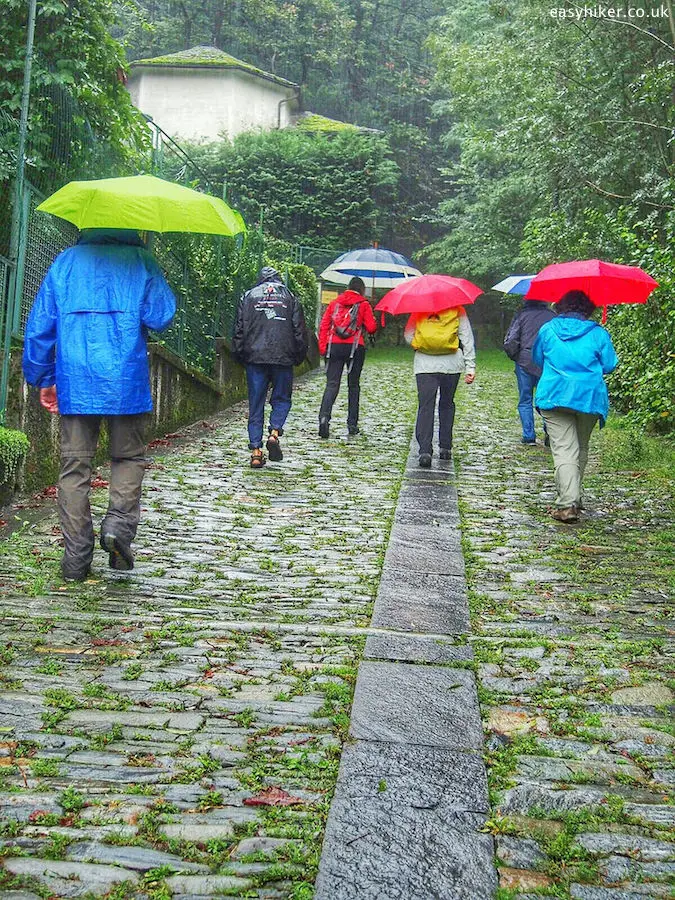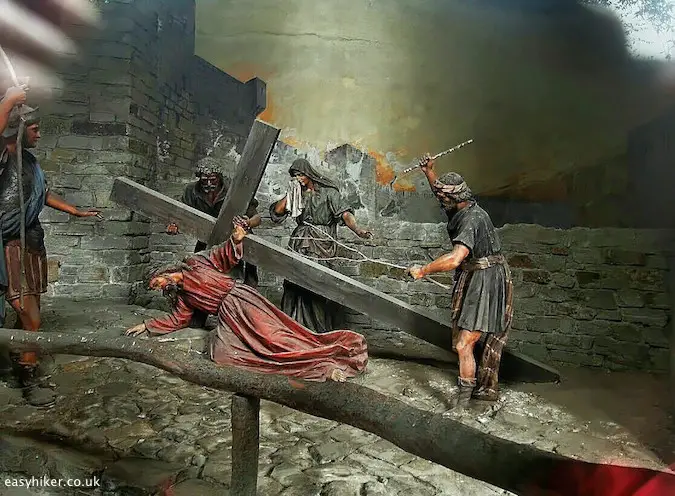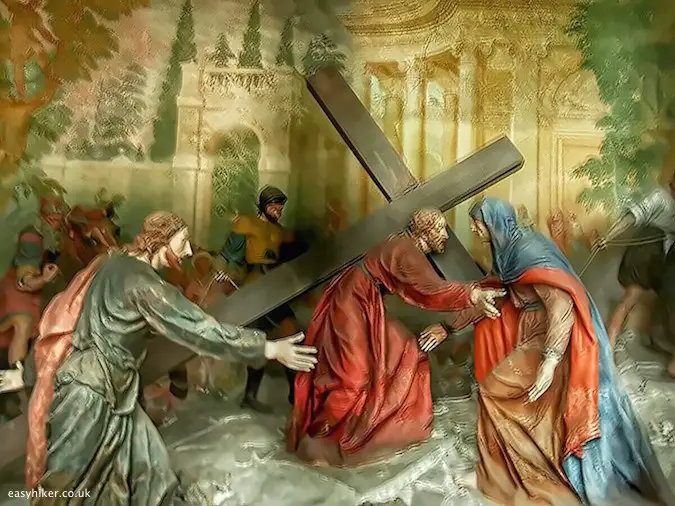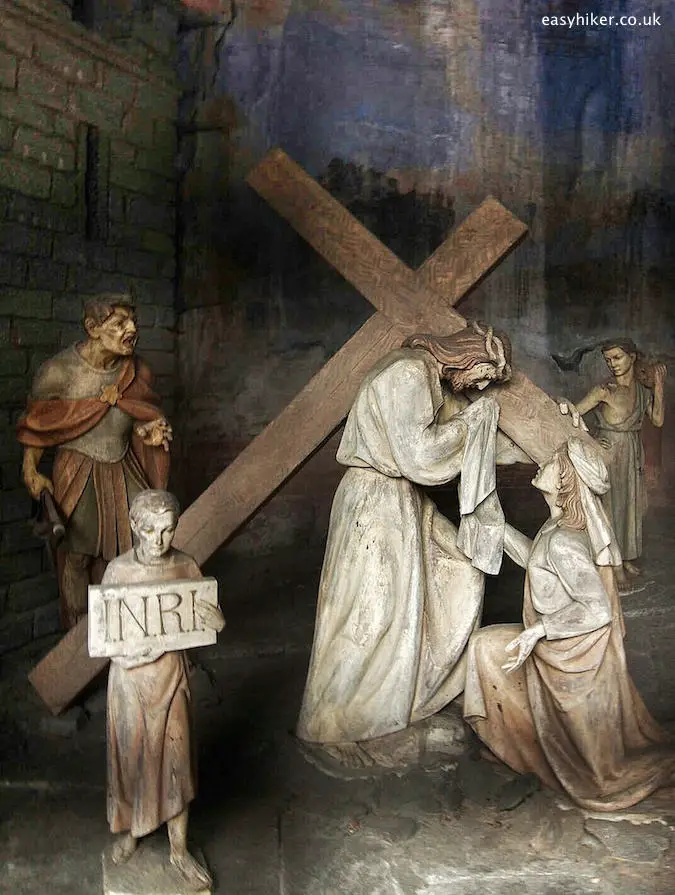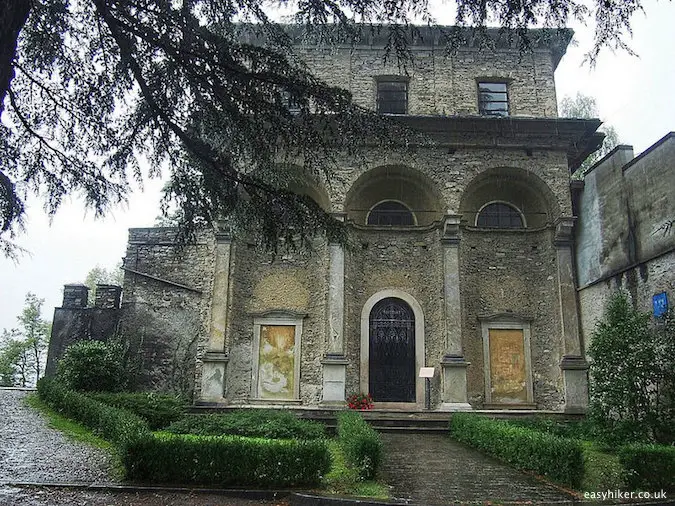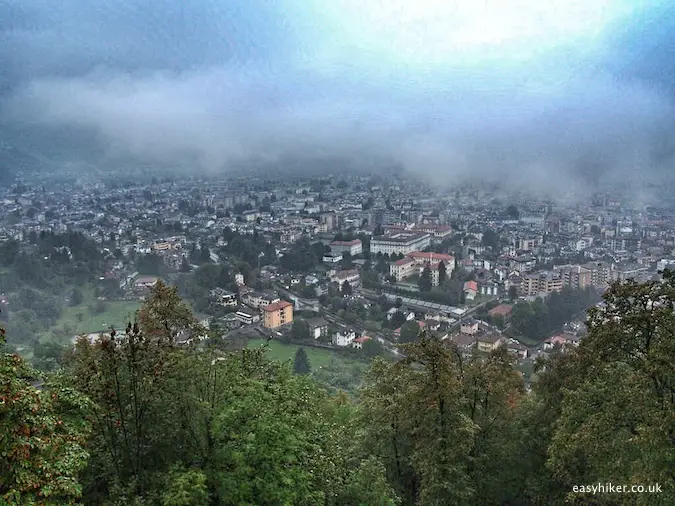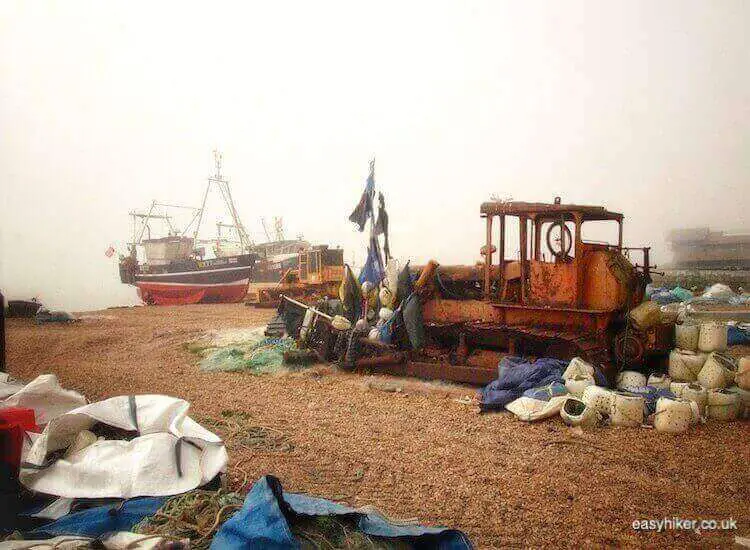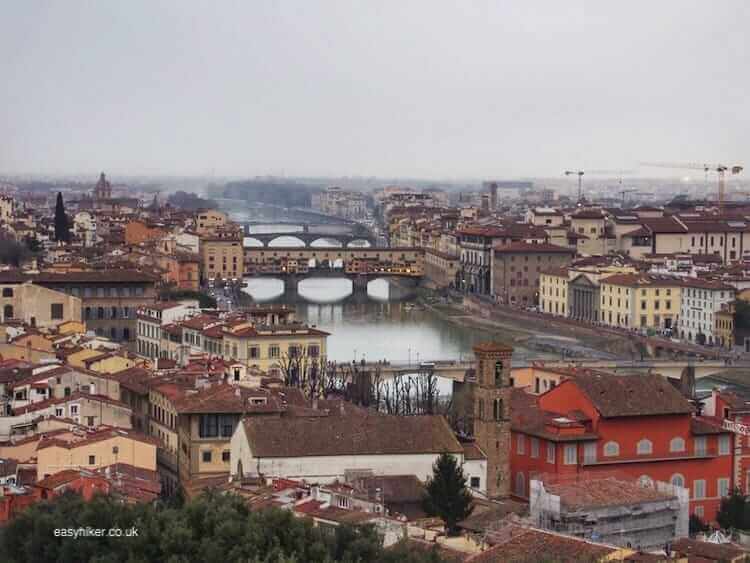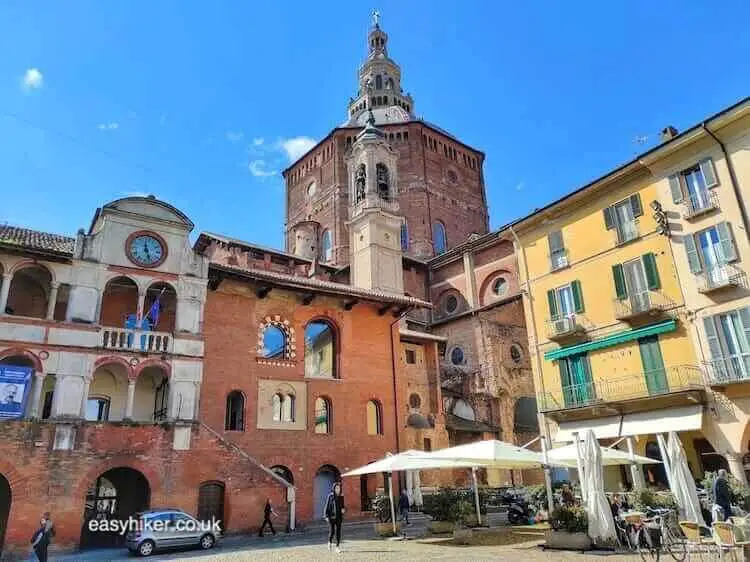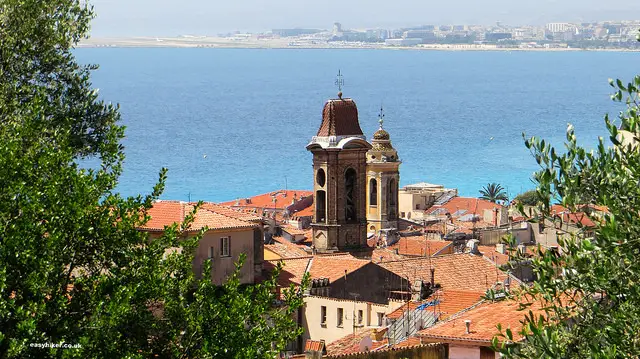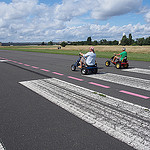Recognized as a UNESCO World Heritage Site, the 15 sculpted stations of the cross on the Sacred Mountain of Domodossola provide a fascinating experience, even in the rain – or, perhaps, particularly so
One thing you have to say for the Alps, they don’t do much by halves there. Europe’s highest mountain range has proper snow in winter, while in summer, when the sun is out, trees and skies and flowers radiate in the crispest, lushest colours you will ever see. And in the autumn, when it rains, it rains.
Alpine skies do not engage in light drizzle nor do they grant temporary let-ups: they let rip. Remember when I said in our second post about Domodossola that one of the main forces to shape the landscape was water? All of that was coming down on our third day.
In the end, our trip to Mount Calvary was half hike, half cold shower. Which was fitting, in a way, because the leitmotif of the walk, the Passion of Christ, did not exactly call for sunny skies and sunny dispositions.
Mount Calvary on Mattarella Hill (the Sacro Monte Calvario in Italian) is one of the nine Sacri Monti of Piedmont and Lombardy, which have together been a UNESCO World Heritage Site since 2003.
The Sacro Monte can be easily reached on foot from the town centre, you walk no more than 15 minutes from Domodossola’s market place until you reach the first of the 15 stations of the cross.
A tour around the hill also provides a perfect complement to a city walk, mainly because you can easily do both on the same day, but also because the site stands in a pleasant contrast to the medieval lanes of Domodossola’s historic Old Town, being located inside a quiet and leafy nature reserve.
Sacri Monti were essentially an invention of the counterreformation period when Catholicism, rather than meeting (and fighting) Protestant austerity on its own ground, opted to give the punters a vivid, blood-and-sand sensual experience. (Essentially the same strategy that Hollywood applied in the 1950s to beat back TV through the invention of colour and CinemaScope.)
On these sacred hills, the stations of the cross are re-enacted by life-size sculptures that are laid out along a devotional path, slowly building up to the crescendo of crucifixion, lamentation and resurrection.
The best ensembles of the Mattarella Hill Calvary can be found in the church on top of the Mount, representing the Deposition …
… and – although this is not, strictly speaking, a station of the cross at all – a rather touching domestic scene where young Jesus receives his calling from an angel while his mother appears to be holding him back.
These are only some of the works that Dionigi Bussola contributed to the project, one of Italy’s best sculptors of the 17th century. Not all the other works are equally good: some were executed by Bussola’s students or assistants, some originals were destroyed and eventually replaced by the works of minor artists, right up to the period following WWII.
The sculpture groups that are not displayed in the hilltop church stand inside purpose-built chapels and are not always that easy to make out since the chapels are not artificially lit and therefore rather dark on the inside.
But if you hold a flashlight camera against the flywire between the iron bars, the flywire will – as though through magic – disappear on the final image. It is only then that you can see the painted backgrounds of the scenes in all their colourful glory.
We were, of course, not the first to notice this effect. People before us had apparently ascribed this “miracle” to Saint Veronica – whom you can see take her famous image of Christ in Chapel 6 – …
… and who subsequently, on the strength of this feat, became the patron saint of photographers. (That’s how things work in the Catholic church. No matter where you stand on the central tenets of its beliefs, you have to admire its craftiness.)
Having completed the walk on the Sacred Mountain of Domodossola, feel free to explore the other side of the hilltop where an ancient castle …
… is overlooking Domodossola and its surrounding valley.
We were told that the view from the castle was spectacular and gorgeous, but under the circumstances, had to take our guide’s word for it.
So there you go.

